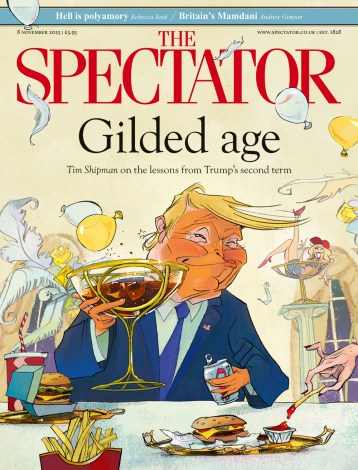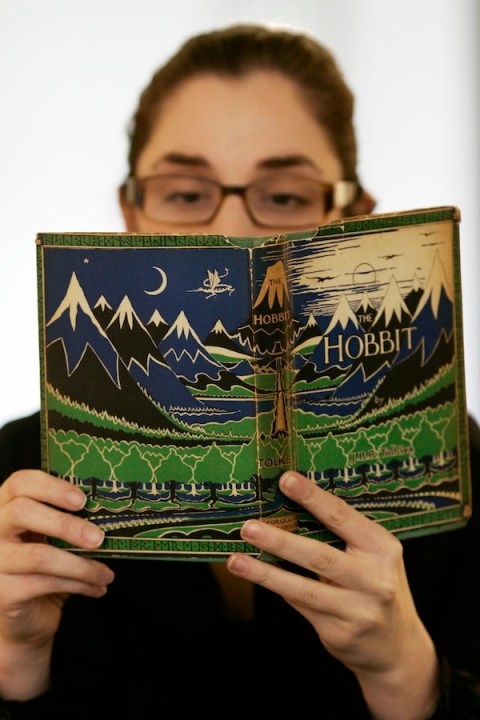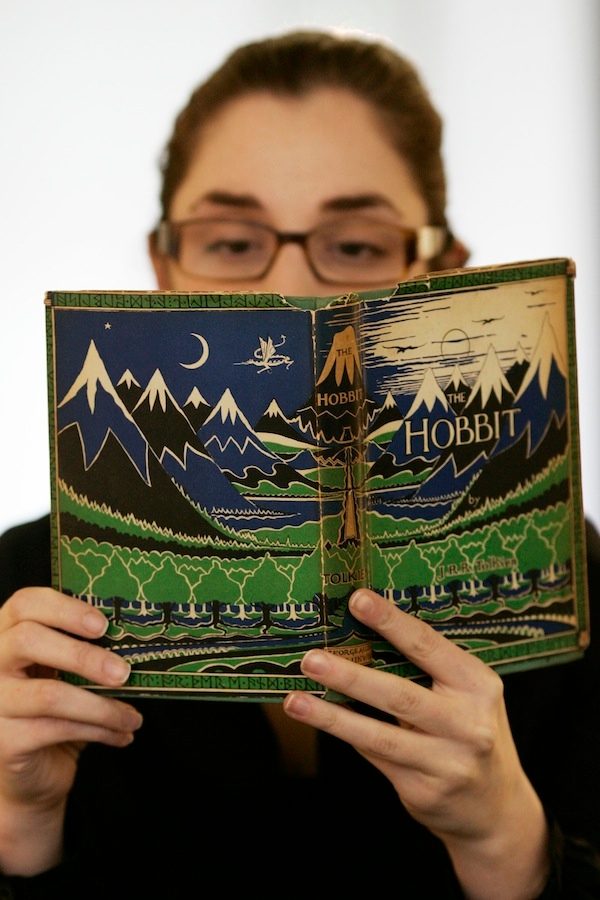Once, I met Priscilla Tolkien, the daughter of J.R.R. Tolkien. It was at the Oxford Catholic chaplaincy, and she was giving a talk about her father. She was charming, something of a hobbit herself with her neat figure, and an engaging talker. But she seemed taken aback by some of her audience. It was divided into two distinct parts. Some were the ordinary Tolkien admirers, the normal, slightly shabby young people you get at chaplaincy talks, and the others were, well, a bit scary. They almost all had black T-shirts, pale faces and intense expressions, and there was a weird sort of obsessiveness about their questions. They read all sorts of things into the books, symbolic meanings that had never occurred to the rest of us. At one point, I remember Miss Tolkien saying, with great emphasis, about The Hobbit: ‘It’s a story.’
In a funny way, the audience at that talk reflected the fate of J.R.R. Tolkien’s best-known works, The Hobbit and The Lord of the Rings. There are those of us who love The Hobbit as a story. And then there are the members of the extraordinary world of fantasy it generated, with plastic orcs, computer games pitting men in cloaks against warty things with clubs, an entire world of good vs evil as imagined by awkward adolescent males. And now, in the culmination of all that, there’s the film — the premiere is next Wednesday. That’s when the cult of The Hobbit finally parts company with the book.
I shall, myself, be passing on the film, 3-D natch, with the greatest gathering of British celebs since Harry Potter — hello Ian McKellan, Billy Connolly and, oh God, Stephen Fry — in favour of reading the book in the bath. And I’m trying to persuade my friends to join in this modest backlash, with the simple and sufficient aim of getting us back to the story, which the author began on an unexpected piece of blank paper that turned up in a pile of examination scripts he was marking for the Schools Certificate. There he wrote: ‘In a hole in the ground there lived a hobbit.’ He told the story to his children. Eighty years ago, in 1932, he finished the book.
It’s a wonderful story, perfectly formed, with all the gaiety and compactness that The Lord of the Rings lacks. It’s a combination of disparate things: saga and myth and larders with seed cake, and dwarves and goblins and the things of fairy tales, along with pocket handkerchiefs — which fairy tales rarely feature. There’s a great deal of learning, as you expect from a professor of Anglo-Saxon, but carried ever so lightly. Parts of the description of the dragon’s lair read as if they’re lifted straight from Beowulf, for the excellent reason that they were, but Beowulf’s dragon was fought and slain, not burgled. Tolkien took the names of Gandalf and the dwarves from The Poetic Edda, a collection of Norse poems, but The Hobbit’s Gandalf is more sublime: he blows smoke rings. Even the minor things, like the way Bilbo Baggins and Gollum play at riddles, come from a very old, Anglo-Saxon tradition. And, as a reviewer of modern children’s fiction, I can tell you there are enough subplots in the quest story of The Hobbit to sustain a dozen contemporary narratives.
The genius of the thing was evident at the time. C.S. Lewis hailed ‘a world that seems to have been going on long before we stumbled into it’ and observes that it is a children’s book only in that the first of many readings is undertaken by children … ‘only later, at a tenth or 20th reading, will they begin to understand what deft scholarship and profound reflection have gone to make everything in it’.
But what, you might ask, if the director, Peter Jackson, has made an enjoyable film — or three? I don’t care. It’s still doing what Tolkien, as storyteller, would have hated: it makes explicit everything that the mind previously imagined. He only sold the film rights to pay off his debts.
Tolkien, of course, did his own illustrations for the early editions of The Hobbit, with firm, bold lines and nice clear topography. But the pictures don’t get in the way of the reader’s imagination; they’re not explicit. You still have your own conception of what Bilbo, Balin and Gandalf look like, what Mirkwood felt like, which the illustrations never really displace.
You can never fully recover your own ideas about a book after you’ve seen a screen version, good or bad. Already, I can’t get my own idea of Gollum back from the film image of Andy Serkis all over the papers. Take it from me: in the time it takes to see the film, you can get through several chapters of the book. Don’t watch. Read.








Comments